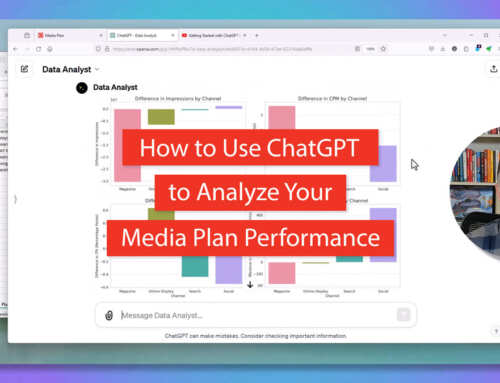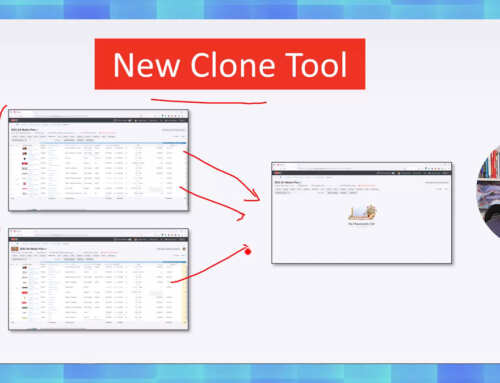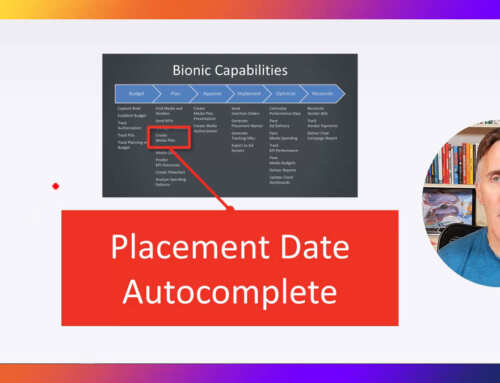The 2017 Association of National Advertisers (ANA) Masters of Marketing was filled to the brim with content, case studies and overall useful information. From established industry leaders like P&G, Kentucky Fried Chicken, Cadillac, and Walmart, to those shaking up the landscape like Lane Bryant, St. Jude Children’s Research Hospital, and Grant Thorton there was something for everyone on how we can benefit our practices while contributing to the health and innovation of the marketing industry.
Here are the five biggest takeaways from the conference:
Authenticity is Everything
If there was one theme mentioned by nearly all presenters at the Masters of Marketing it was authenticity. While authenticity for brands is by no means a new concept, it is amplified by today’s 24-hour news cycle and the countless streams of information that plug directly to consumers. Now more than ever, consumers want to know what your brand stands for and they are holding brands accountable for their actions.
Are your products and brand sending the same message? Does your brand represent the employees’ values? Is the space you’re placing your media buys in line with those values?
Kentucky Fried Chicken Rediscovers Themselves

Kentucky Fried Chicken gave a powerful example of how a lack of authenticity nearly killed an iconic brand. The name change from Kentucky Fried Chicken to KFC led to brand damaging rumors about the quality of chicken, and their pivot away from highlighting their fried chicken due to the fear of alienating health conscious consumers resulted in a nearly 40 percent drop in their domestic business.
Kevin Hochman, President and Chief Concept Officer at Kentucky Fried Chicken U.S., and Eric Baldwin, Executive Creative Director at Wieden+Kennedy took the Kentucky Fried Chicken team deep into the archives where they discovered the heart and soul of the brand. Colonel Sanders’ legendary salesmanship, playful spirit and unwavering confidence provided the foundation for the team to rebuild the brand’s relevancy and appeal to today’s consumers. They no longer feared highlighting fried chicken and unapologetically branded everything – from crispy chicken scented sunscreen, gamifying the experience of making Kentucky Fried Chicken, even a full merchandise store that, as Esquire Magazine put it, does not suck. Additionally, they brought back the Colonel as the brand’s salesman and opted to double down on the brand elements that made them so successful in the first place.
Kentucky Fried Chicken got back to the core of who they are and no longer run away from the fact that they sell delicious fried chicken. The numbers show they’re better off for it.
Know Where Your Advertising Dollars are Going
Ad fraud, brand safety, bots; these are three of the buzziest buzzwords in advertising today. We all know what they mean and how damaging they are to the industry, but what are we individually doing about it?
While it’s true that vendors and publishers need to be more transparent and supply chains should be less complex, there are steps that advertisers must take to help accelerate these changes while keeping your brands safe and dollars effective. Here are the steps presenters such as Marc Pritchard, Chief Brand Officer at Procter & Gamble and Kristin Lemkau, CMO of JPMorgan Chase are taking that any of us, no matter the size of company or advertising spend, should follow:
Transparent agency contracts – We dived deeper into this in our ANA Calls for More Transparency, Accountability, and Control of Advertising Investments article. Advertisers need to address conflicts of interest, equity holdings, and publisher kickbacks. Agencies can no longer bury details in legal contracts that marketers and procurement officers don’t have the time or resources to fully comprehend. Marketers need to become intimately familiar with the financial interests that drive agencies’ media buying decisions. Most importantly, advertisers need to mandate transparency and unrestricted audit rights.
Ad fraud prevention – Create and manage your own black and whitelists. Work only with trusted partners that can prove their media is clean. Ask the tough questions of your vendors, can they show you were every dollar goes? Do they understand their own supply chain? Advertisers also need to put it on themselves to do the research. Presenters noted that when they chased the lowest CPM it attracted more bots. Low cost is great, but is it costing you efficiency? More importantly, do you have a system in place so you could tell if it is?
Brand safety – Advertisers need to have zero tolerance for vendors who cannot assure brand safety. Do your vendors know exactly where all your advertisements are placed? Advertising appearing next to fake news, illicit content, or terrorist recruitment videos will cause irreparable harm to a brand. There is no place for it. If your advertising is appearing in those places, your money is funding these operations. While it might be scary to cut advertising take a note from Pritchard. “We cut more than $100 million in wasteful spending starting last March because we couldn’t be assured ads would not appear next to bad content like a terrorist video…We still delivered our sales growth objectives, proving it was smart to do.”
Put simply, advertisers need to take a page out of the consumers playbook and start voting with their dollars. Hold vendors and publishers accountable to clean up their media offerings and provide auditable data. Until then, STOP GIVING THEM YOUR MONEY. Additionally, invest in systems that improve your company’s ability to keep an eye on KPI’s and the performance of your advertisements in respect to business goals.
Craft Advertisements for the Medium
We hear over and over about how the consumer is changing. They consume content differently, they shop differently, they even interact with friends and family differently. As a result, the traditional methods of advertising don’t resonate and, in many cases, annoy today’s consumers.
Complement the User Experience
Advertisers needs to stop creating advertisements for one medium and simply change the specs to fit another. Traditional advertisement has always been disruptive. A :30 video spot during the news, a one pager in the newspaper, a live read during drive time radio, these all require interruptions in the medium to serve.
“Consumers have too many choices for that to be ok,” said Kristin Lemkau, CMO of JPMorgan Chase.
Rather than forcing the audience to deal with interruptions, advertisers need to innovate and create the next generation of digital ads that enhance, not detract, from the experience. While this may seem like primarily a creative issue, media teams also need to think strategically about how placements affect the audience’s experience. Reach is important, but relevancy is equally vital. Just because a consumer fits the target audience doesn’t mean they always want to be engaging with that category of products. Pick and choose when and where to engage.
Price is Losing its Power
Jim Lecinski, Vice President of Customer Solutions at Google and Sarah Personette Vice President, Global Business Marketing at Facebook both spoke about how price is losing its power during their separate presentations. Today’s consumers are willing to spend a little more for convenience. In other words, success now relies on minimizing the amount of friction between the consumer finding the product and getting it in their hands. Lecinski even devised a formula to help marketers remember how to reduce friction, which is a very Google thing to do.
Min(F)=C*D*I or to minimize friction you need to satisfy curiosity, understand demands, and relieve impatience.
Marketers Have the Power to Change the World

As marketers and advertisers it isn’t always easy to see the purpose in our everyday work. We build campaigns hawking goods and appealing to consumerism and wonder if any of it matters? Meanwhile, we witness the movements community organizers build, watch the emotions that artists and performers invoke, and grow envious of the passion of revolutionaries.
On closer look, you will see that our responsibilities to our brands and communities are so much more than appeals to buy a product. Marketers empower and activate communities like DoSomething.org did by creating a place for people who want to do good to turn their ambitions into meaningful actions, invoke powerful emotions like Donate Life’s World’s Biggest Asshole campaign that showed hope can be born from tragedy, and even spark a revolution like Lane Bryant’s #PlusIsEqual campaign that is redefines the definition of beauty and empowers women.
Marketing has the potential to drive significant positive change in the world. We have the responsibility to create a climate of good corporate citizenship both through our marketing messages, and through embedding the values of our employees, clients, and communities in our brands.
Talent Needs to be Cultivated
Growth has stalled for many companies. Talent drives growth, but marketing is experiencing a fundamental talent crisis. Last year the ANA Educational Foundation (AEF) contracted GfK Research to study stakeholder perspectives on the reasons behind the challenges of attracting and retaining talent.
Three core objectives drove the survey:
- Better understand the dimensions and causes of the talent problem
- Identify potential remedies to both attract and prepare top talent to enter and excel in the marketing and advertising industries
- Inform, inspire, and instruct talent acquisition and retention
The study ascertained four significant reasons for the disconnect:
- Digital transformation complicates new marketing and advertising career paths
- College and university curricula cannot keep pace with the rapid change going on in the industry
- Marketers and agencies now directly compete with technology companies for highly skilled talent
- “Great expectations” are defining today’s crop of young talent
The three most critical issues according to the study are:
Challenge 1: Marketers and agencies seeking “job-ready” talent from universities
Challenge 2: Academia seeking better ways to adapt and prepare students for careers in a digital, data-driven world
Challenge 3: Students seeking clarity on professional growth and a career that matters
To address the issues ANA and AEF created A Call to Action: Pathways 2020. An initiative to create “a wider, more diverse, and better equipped pool of talent to fuel industry growth. At the same time, it will make the case for what a creative, innovative and rewarding career marketing can be.” The initiative sets out to accomplish the following goals: 1,000 Industry Campus Visits, 1,000 Professors Inspired, and 1,000 students immersed by 2020.
Visit www.aef.com/pathways2020 to download the full study and learn how you can pledge your support.





